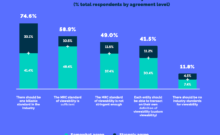Just weeks ago, Unilever, one of the biggest advertising spenders in the world, threatened to pull ads from digital and social platforms if they fail to eradicate content which “creates division in society and promotes anger and hate.” Considering that Unilever spent over $9 billion (£6.4) billion on advertising in 2017 and recently stated its intention to increase this spend by £220 million in 2018 ( Marketing Week ), the industry is forced to take the call to action seriously.
While there has been praise for some platforms’ primary efforts toward a brand-safe environment, but the larger problem persists. Advertisers, generally, are fed up with fighting for the enforcement of editorial, creative, or brand safety standards on the internet that traditional media companies have long upheld. Meanwhile, fraud, a parallel threat, continues to undermine brands’ trust in the programmatic marketplace.
the quantity of ads is degrading quality of user experience
The quantity of ads is degrading quality of user experience. Amazon is challenging the balance of power in the ecosystem. And transparency throughout the digital advertising supply chain is an ever-present qualm.
There are many fixes to be made. But the industry would do well to start by addressing one of the most rampant issues associated with ad fraud: the dangers of viral content.
AppNexus’ data scientists have devoted a great deal of time and attention to the investigation of fake news, viral content, and ad fraud, to ensure we optimally support our clients in these areas. When the team dug in, they came to the conclusion that fake news is a subcategory of viral content. As we saw throughout the 2016 U.S. presidential election and the EU referendum vote in the UK, these ideologically-slanted, factually-dubious stories exist to get readers fired up, engaged, and clicking through to stories.
Read More at The Original Article: www.marketingtechnews.net









